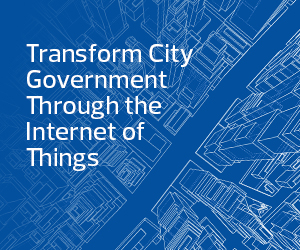Why Now? Digital Transformation Today
State and local governments began modernizing at a fever pitch during the pandemic in 2020.
“We saw an acceleration of five years in five months,” Rodulfo said. With so many advancements already made, why should state and local governments continue their digital transformation journeys in 2024 and beyond?
“It’s necessary because technology is still changing. Because your young population is demanding it, explicitly or not,” Merchhiya said. “We’re not limited by people residing in our geographic area. Our citizens could be anywhere on the globe and should be able to conduct business any time.”
Riedl said that the city of South Bend is growing, and her team is concerned about placemaking, maintaining quality of life and improving services to meet demands. For Rodulfo, this aligns with his city’s vision of improving quality of life for constituents, addressing their needs and boosting public safety.
Digital Transformation: The First Steps
Regarding digital transformation strategy, the three city leaders spoke about figuring out the why before the how. When considering digital transformation plans, state and local governments must identify what they want to accomplish instead of starting with how to leverage tools and technologies. Merchhiya said that he always asks the same five questions of leadership about their digital transformation plans:
- What are your priorities?
- How would you describe your project?
- How do you define success?
- Do you have the resources to embark on this journey?
- What is your timeline?
“The change management aspect of any initiative, big or small, needs to be taken seriously,” he said.
“I would recommend … in this day and age, any kind of IT director, cybersecurity director, anyone at a high level or even at a mid-manager level involved in digital transformation should get some proficiency in change management,” Riedl said.
The three panelists also discussed partnering with local universities to teach data management, change management and general technical expertise. For example, at Syracuse University, Rodulfo taught a course on leading smart cities and sent all of his managers to take it.
WATCH: How CIOs are working to accelerate digital transformation.
How to Generate Buy-In in Government
Of course, even with a plan, state CIOs and innovation officers need support from city councils, local leaders and other state government officials to have the resources and bandwidth to modernize. For Riedl, generating buy-in is about demonstrating value.
“It’s framing digital transformation as good government efficiencies,” she said. “Quantifying the opportunity cost is very effective. The cost of not making changes is very high, whether it’s analog permitting or having a digital divide in your city.”
Riedl added that IT leaders must know what their elected officials and residents care about. She said that South Bend does a survey every two years to understand their priorities and focus digital transformation efforts on those points.
“The good thing about digital transformation is it supports everything,” she said. “Whether it’s potholes, sidewalks or crime, there’s a digital transformation component to everything.”
DISCOVER: Why state and local governments should accelerate digital services development.
Agencies must also be equipped with relevant data that shows the impact of digital transformation initiatives. Merchhiya said that he has equipped his IT department with the tools and information to engage with stakeholders and citizens to communicate how digital transformation can solve their problems. In the case of law enforcement, Glendale placed its computer-aided dispatch data into a geographic information system analytics dashboard to help nonemergency line operators give citizens up-to-date data.
“That’s an example of … adjusting your approach to resolve a problem by providing the data at the time of interaction for the operator or a representative right at the time they need it,” he said.
Keep this page bookmarked for our coverage of the Smart Cities Connect 2023 fall conference. Follow us on X, formerly known as Twitter, at @StateTech. Join the conversation using the hashtag #SCC23.











